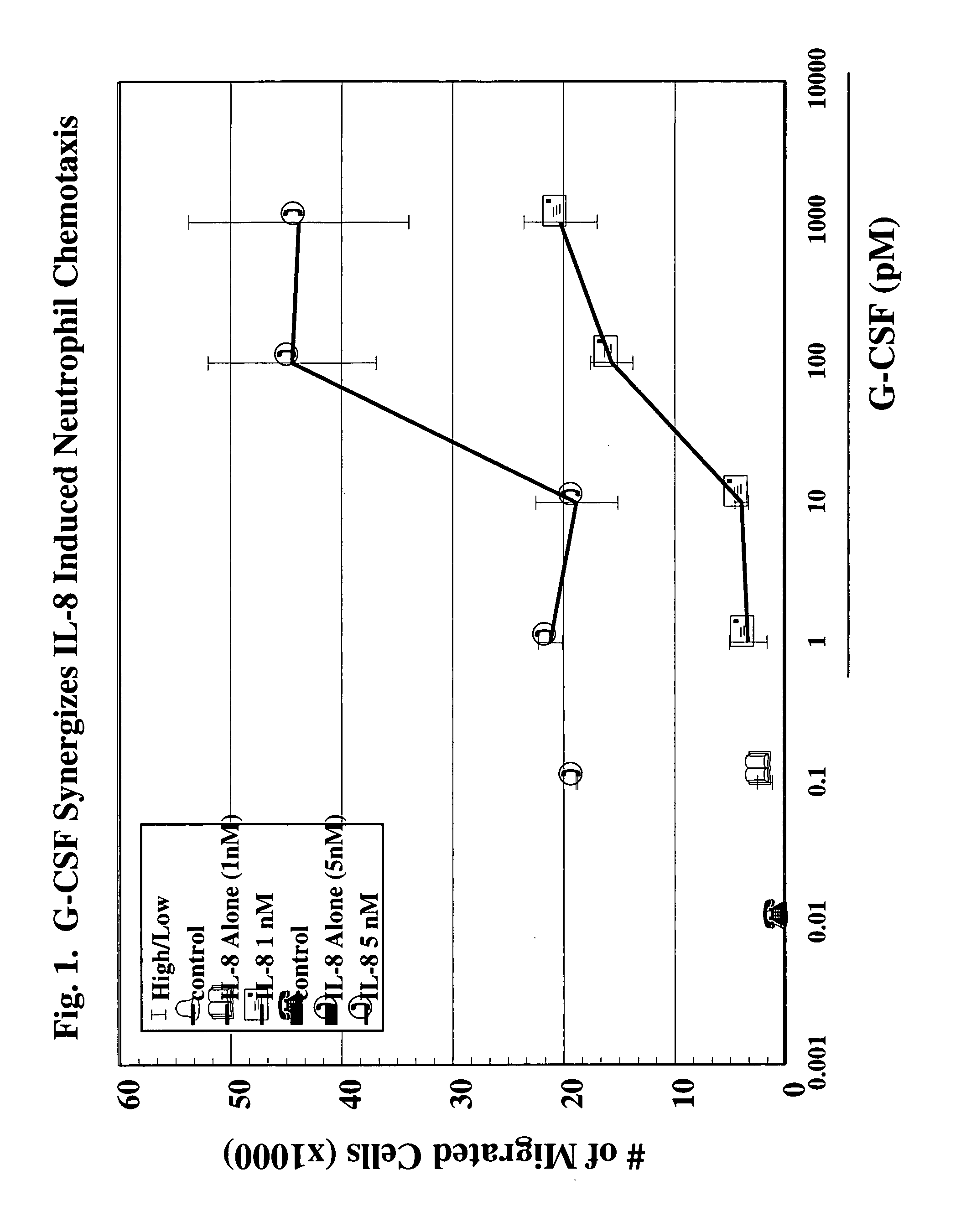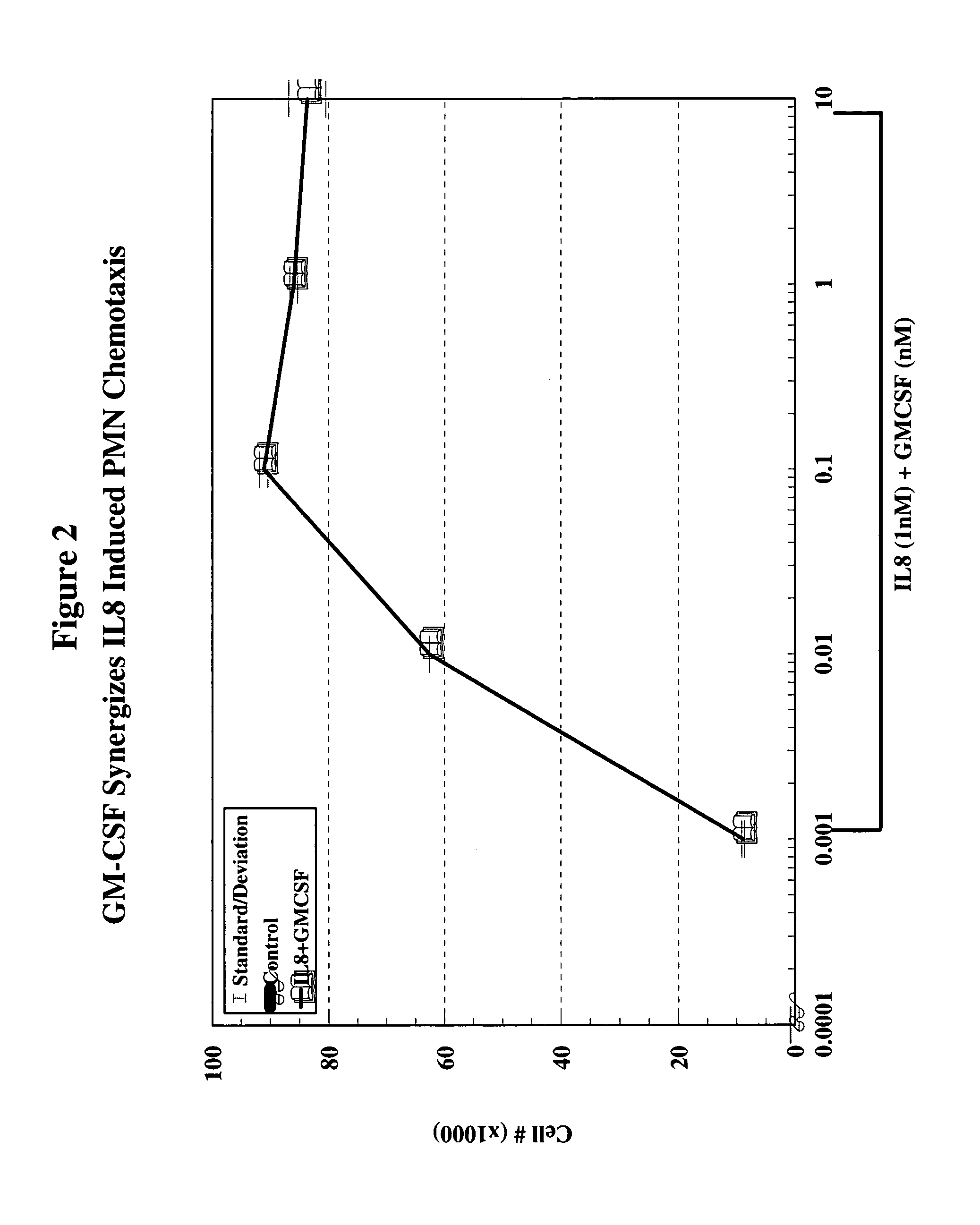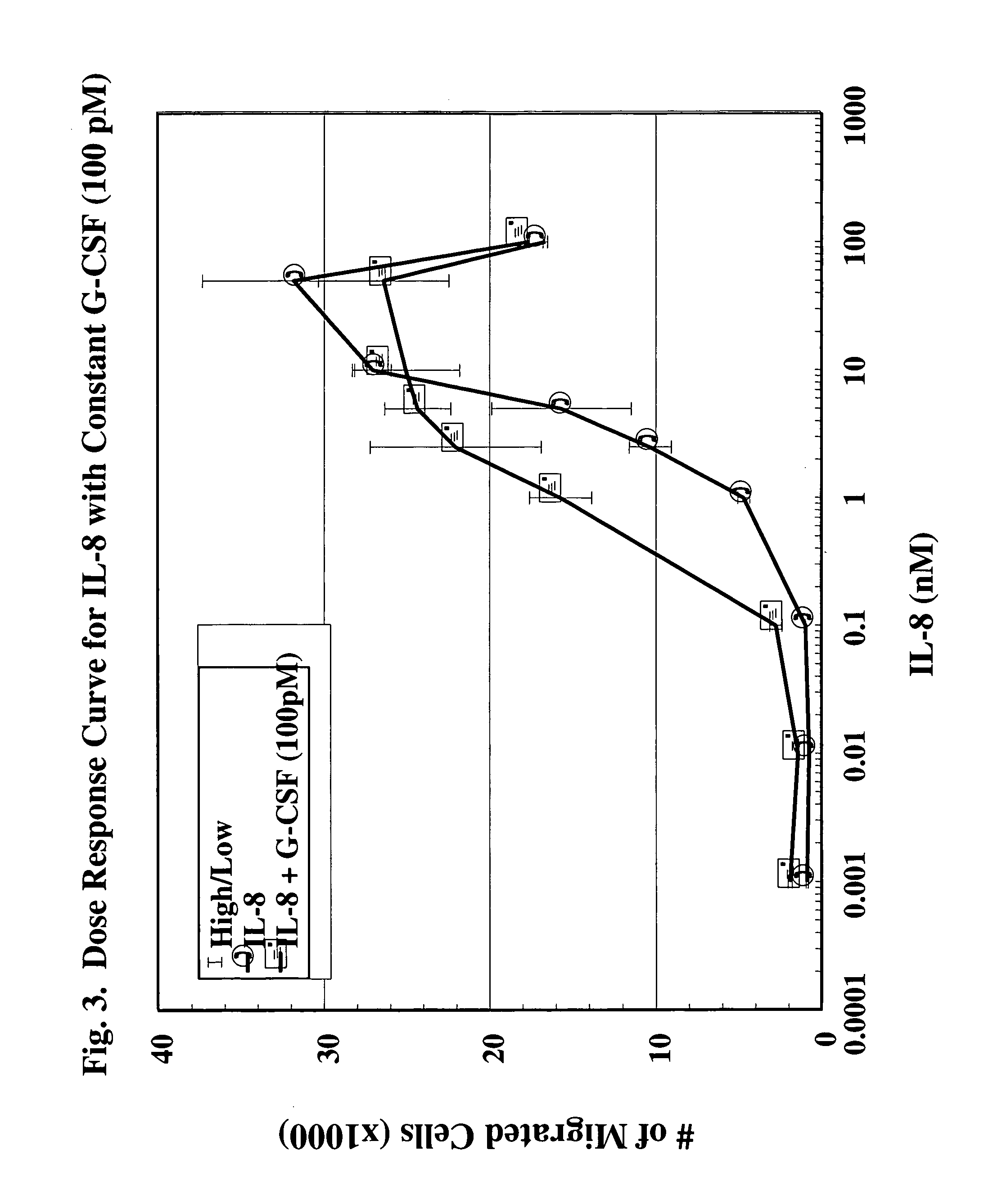Methods of treating inflammation using antibodies to M-CSF
a technology of mcsf and anti-inhibition, which is applied in the field of immunomodulatory factors and mcsf inhibitors, can solve the problems of affecting the work of human macrophages, affecting the survival rate of human macrophages, and affecting the work efficiency of human macrophages, so as to inhibit or prevent leukocyte accumulation or activation, and inhibit the synergistic effect of mcs
- Summary
- Abstract
- Description
- Claims
- Application Information
AI Technical Summary
Benefits of technology
Problems solved by technology
Method used
Image
Examples
example 1
Materials and Methods
[0127]Reagents & Animals: For all experiments, male New Zealand White rabbits (3.0–3.5 Kg) purchased from Charles River Breeding Lab (Wilmington, Mass.) were used. The animals were fed standard lab rabbit CHOW (Ralston Purina Company, St. Louis, Mo.) and housed according to institutional guidelines. G-CSF was obtained from R&D Laboratories (Minneapolis, Minn.); transwell plates for chemotaxis were obtained from Coming-Costar (Coming, N.Y.); LYMPHOPREP (Nyegaard & Co. A.S., Oslo, Norway) was obtained from Nycomed Pharma A.S., Oslo, Norway; prostaglandin E2 (PGE2) was obtained from Caymen Chemical (Ann Arbor, Mich.); bradykinin was obtained from Sigma Chemical Co. (St. Louis, Mo.); and 125I-IL-8 was obtained from Amersham Life Science, Budhinghamshire, England. IL-8 was a kind gift from Leukocyte, Inc. (Boston, Mass.).
[0128]Chemotaxis Assay: Peripheral circulating neutrophils were isolated from the blood of normal healthy volunteers. Heparinized venous blood was d...
example 2
Protocol for a potential screening assay for G-CSF receptor antagonists:
[0135]This assay utilizes the binding properties of G-CSF directly to its receptor on the cells.[0136]1. Obtain G-CSF receptor cDNA from the human genomic DNA synthesized from human neutrophils. The cDNA can be obtained by polymerase chain reaction (PCR) using primers aligned to the 5′ and 3′ ends of the mRNA sequence that is readily available in the IMPATH GENEBANK CANCER TISSUE / PERIPHERAL BLOOD REPOSITORY (IMPATH, Inc, Franklin, Mass.).[0137]2. Clone the G-CSFR cDNA into a plasmid such as pcDNA 3.1 and stably transfect into a hematopoetic cell line that closely resembles the circulating leukocytes. Stably integrated clones can be screened by using an antibiotic resistance marker such as gentamycin (G418).[0138]3. Using radiolabeled G-CSF, the expression of this transfected G-CSFR can be quantitated and the binding of G-CSF can be measured. The binding is performed using radiolabeled (I125) G-CSF. (I125)G-CSF i...
example 3
[0143]The assay of Example 3 provides a method for directly measuring activation of human monocytes in human whole blood using a Fluorescent Activated Cell Sorter (FACS) instrument. The FACS uses laser excitation to detect leukocytes by measuring the autofluorescence of leukocyte DNA. The assay of Example 3 provides a method of detecting the three main classes of leukocytes (i.e., granulocytes, lymphocytes, and monocytes) using forward scatter (FSC) to determine characteristic cell sizes and using side scatter (SCC) to determine characteristic cell granularities.
[0144]In response to stimulation by a chemokine and / or M-CSF, the monocyte cell population as measured by FSC (i.e., size) increases. The measured response is indicative of either a cell shape change (e.g., ruffling of cell membrane) and / or a homotypic aggregation of monocyte cells. Both cell shape change and homotypic aggregation of monocyte cells occur during initial activation, adhesion, and transendothelial migration of ...
PUM
| Property | Measurement | Unit |
|---|---|---|
| diameter | aaaaa | aaaaa |
| weight | aaaaa | aaaaa |
| body weight | aaaaa | aaaaa |
Abstract
Description
Claims
Application Information
 Login to View More
Login to View More - R&D
- Intellectual Property
- Life Sciences
- Materials
- Tech Scout
- Unparalleled Data Quality
- Higher Quality Content
- 60% Fewer Hallucinations
Browse by: Latest US Patents, China's latest patents, Technical Efficacy Thesaurus, Application Domain, Technology Topic, Popular Technical Reports.
© 2025 PatSnap. All rights reserved.Legal|Privacy policy|Modern Slavery Act Transparency Statement|Sitemap|About US| Contact US: help@patsnap.com



